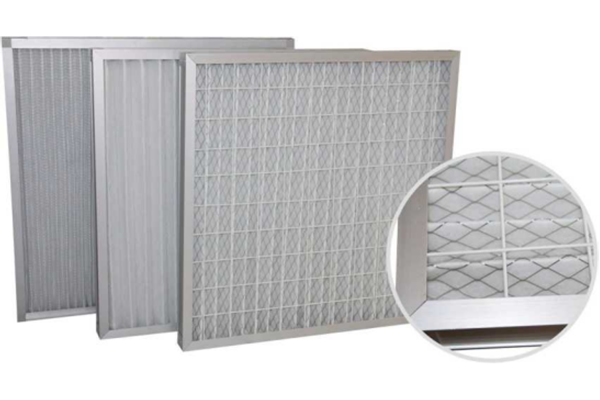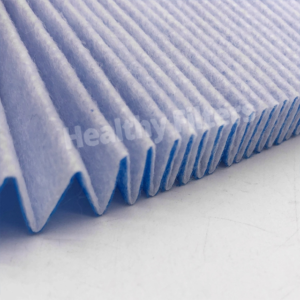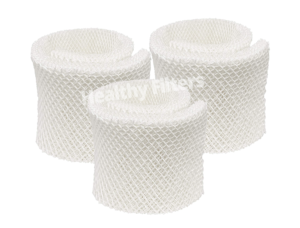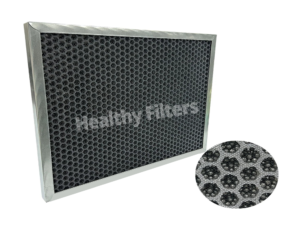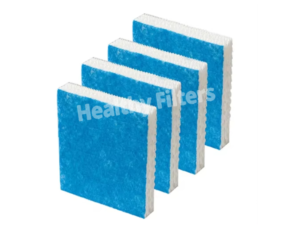Panel Pre-filter Mesh is the primary protection component of the air filtration system, designed for intercepting large particle pollutants (such as dust, hair, fiber, insects, etc.). It is usually installed at the front end of the filtration equipment to protect the high-efficiency filter (such as bag filter, HEPA) at the back end from being blocked by large particles, extending its service life and reducing the overall maintenance cost. With high permeability, easy maintenance and economy as its core advantages, it is widely used in commercial buildings, industrial manufacturing and transportation facilities.
Core structure and material properties
Material composition
Metal mesh: Made of aluminum, stainless steel (304/316) and other materials, it forms regular mesh (aperture 1-10mm) through weaving or punching process, with high rigidity, corrosion resistance and deformation resistance, suitable for high temperature or high humidity environment.
Synthetic fiber mesh: Polyester (PET) and polypropylene (PP) non-woven fabrics are reinforced to form a lightweight flexible filter (weight 50-200g/㎡), which can be added with antistatic or hydrophobic coatings, suitable for clean rooms or humid scenes.
Structural design
Single or multi-layer composite: Metal mesh often increases the effective filtration area with a wavy or flat structure; synthetic fiber mesh can be stacked with a coarse fiber layer to form a gradient interception.
Frame reinforcement: Aluminum frame or plastic frame improves overall strength and supports embedding in standard size filter slots (such as 592mm×592mm, 610mm×610mm).
Core functions and advantages
High-efficiency pre-filtration
Intercepts large particles ≥5μm (such as gravel and catkins), and the filtration efficiency meets ISO Coarse (EN 779) or MERV 1-4 (ASHRAE 52.2) standards, reducing the back-end filter load by 40%-60%.
The open mesh structure keeps the air flow resistance extremely low (initial pressure difference <30Pa), reducing system energy consumption.
Durability and easy maintenance
The metal mesh can be washed, back-blown with compressed air or cleaned with ultrasonic waves, and can be reused 5-10 times, reducing the cost of consumables.
The synthetic fiber mesh is light and easy to replace. Some models support surface wiping and cleaning, and the maintenance cycle is 3-6 months.
Environmental adaptability
Temperature range: metal mesh (-50℃~300℃), synthetic fiber mesh (-30℃~120℃), suitable for extreme working conditions such as cold storage and drying lines.
Anti-rust and mildew: stainless steel or coating treatment prevents corrosion in humid environments and extends the life of outdoor use scenarios.
Typical application scenarios
Commercial buildings: Central air conditioning fresh air system inlet, blocking fallen leaves, flying insects and coarse dust, protecting surface coolers and high-efficiency filters.
Industrial manufacturing:
Pre-filter metal debris in welding workshops to prevent sparks from entering ventilation ducts.
Food processing plants intercept packaging debris and hair to meet HACCP hygiene standards.
Transportation:
Subway platform ventilation shaft protection to prevent garbage bags and paper scraps from being sucked into the fan.
Air inlet filtration in automobile manufacturing workshops to prevent sand and gravel from damaging equipment.
Data center: Server room air conditioning system to intercept fiber flocs and prevent dust accumulation on circuit boards.
Selection and maintenance guide
Key selection parameters
Pollutant type: Stainless steel perforated mesh is preferred for metal debris environment; polyester non-woven mesh is suitable for fiber dust scene.
Air volume and pressure drop: Select mesh density (such as 20%-60% open porosity) according to system air volume (m³/h) to ensure that the pressure difference is <50Pa.
Installation space: Flat type is suitable for compact space, and the wavy design increases dust holding capacity and is suitable for high dust load scenes.
Maintenance optimization strategy
Cleaning cycle: Through visual inspection or pressure difference monitoring, the metal mesh is cleaned every 1-2 months, and the synthetic fiber mesh is replaced every 3-6 months.
Cleaning method: The metal mesh can be soaked and scrubbed with a neutral detergent; avoid high-pressure water washing of synthetic fiber mesh to prevent structural damage.
Replacement tips: When the mesh deformation rate reaches 30% or the pressure difference is still twice higher than the initial value after repeated cleaning, a new mesh needs to be replaced.
The plate pre-filter takes “efficient interception, economical and durable” as its core value and becomes an indispensable primary barrier for the multi-stage filtration system. Through scientific selection and regular maintenance, the system operating cost can be significantly reduced, the life of key equipment can be extended, and reliable front-end protection solutions can be provided for industrial and civil fields.

